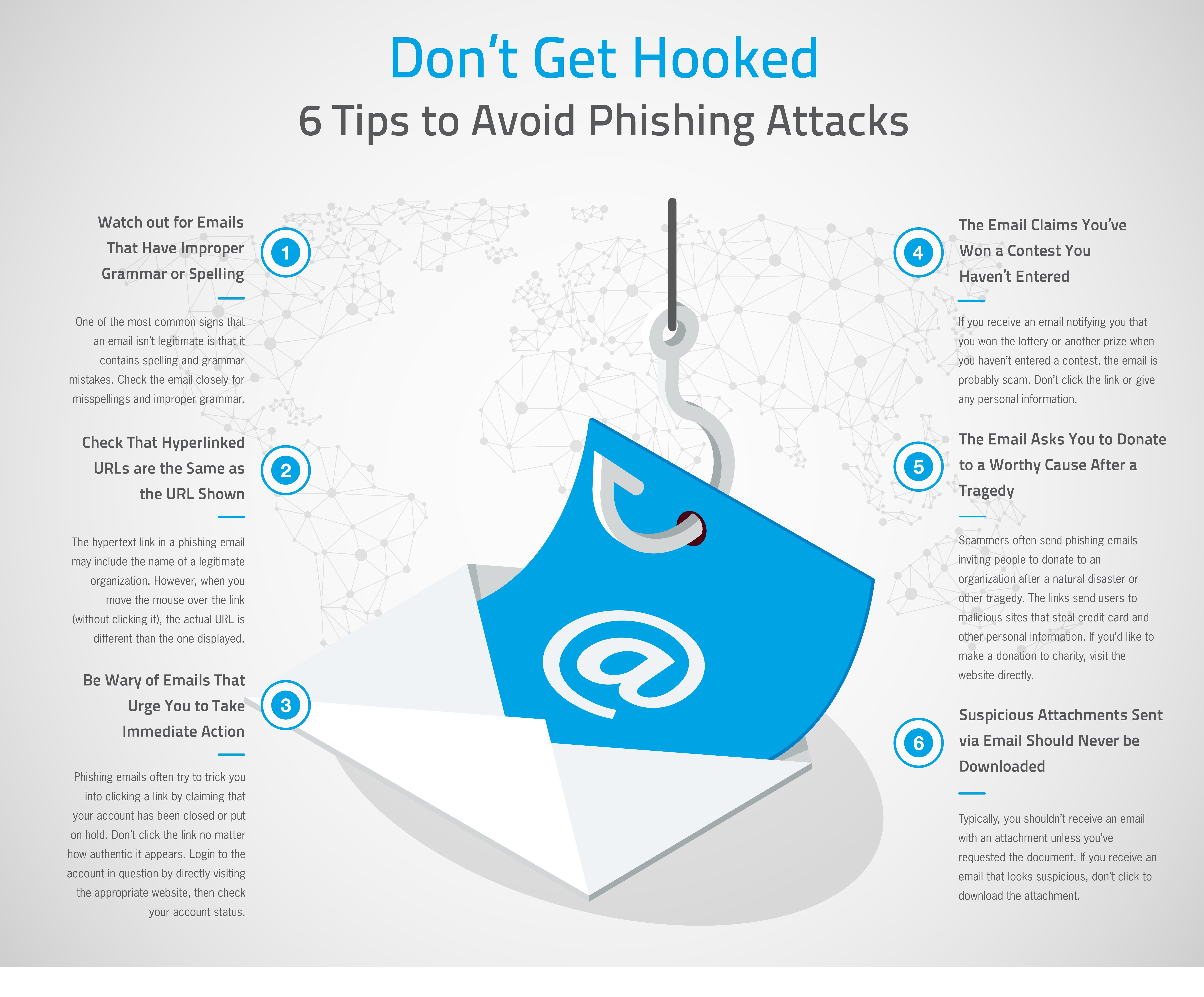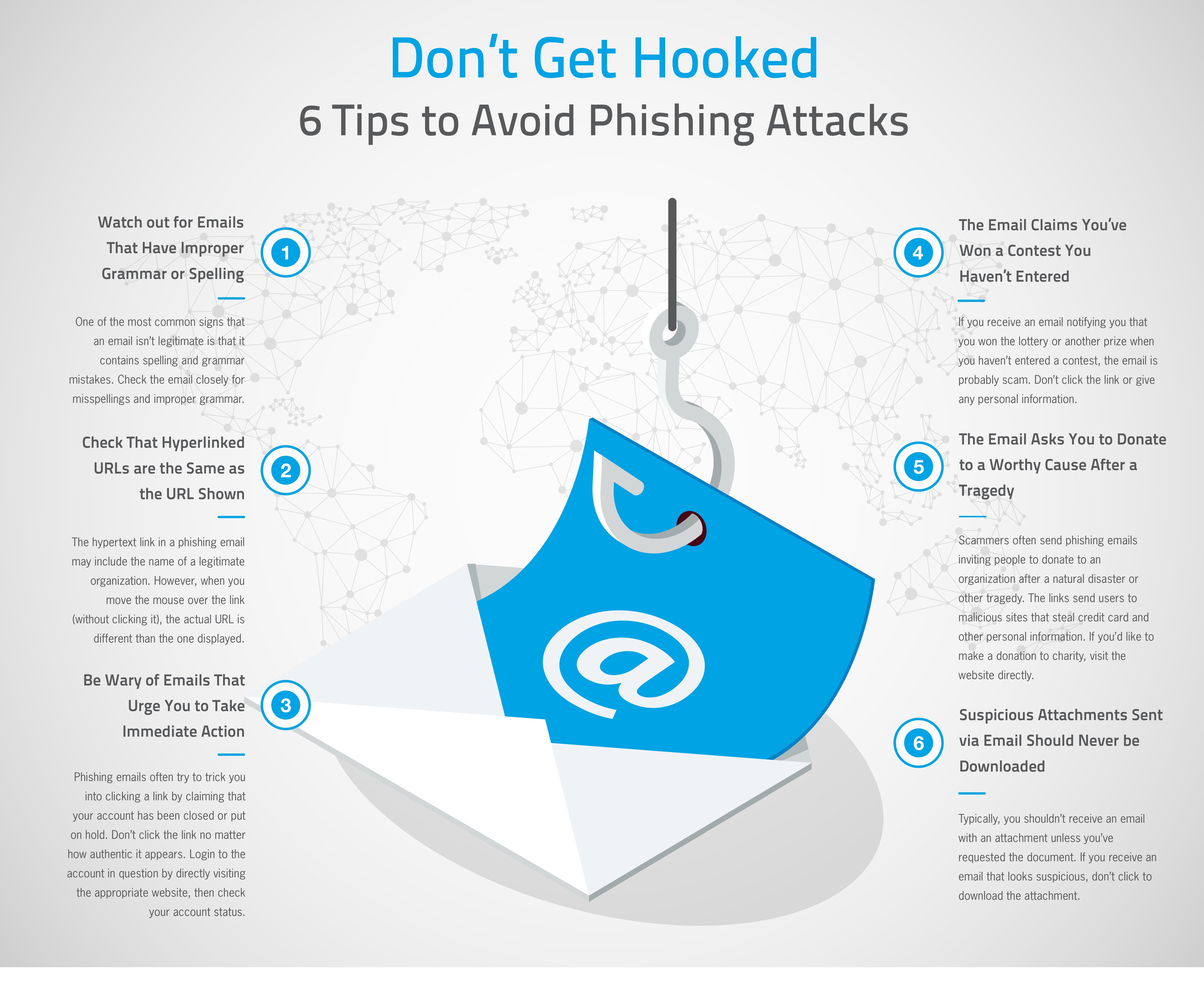Phishing attacks are getting smarter every day, and they could target you without warning. Imagine opening an email or message that looks real but is designed to steal your personal information.
It’s scary, right? But don’t worry—knowing how to spot these tricks can keep you safe. You’ll learn simple steps to protect yourself from phishing scams and keep your data secure. Keep reading, because your online safety depends on it.

Credit: blog.totalprosource.com
Phishing Basics
Phishing is a common online scam. It tricks people into sharing personal information. Knowing the basics helps you stay safe. This section explains what phishing looks like, common tricks, and why it is risky.
What Phishing Looks Like
Phishing often comes as fake emails or messages. They look real but contain errors or odd links. Sometimes, phishing sites copy real websites exactly. They ask for passwords, credit card numbers, or other private details.
These messages may create a sense of urgency. They warn of account problems or ask for immediate action. This pressure makes people respond without thinking.
Common Phishing Techniques
One common trick is email phishing. Scammers send emails pretending to be trusted companies. They ask you to click a link or download an attachment.
Another method is spear phishing. It targets specific people using personal details. This makes the message more believable.
Phishing also happens through text messages. These texts ask for sensitive information or direct you to fake websites.
Why Phishing Is Dangerous
Phishing can steal your money and identity. Scammers use your data to access bank accounts or buy items. They can also use your information to trick your contacts.
Phishing attacks often cause stress and loss. Recovering from identity theft takes time and effort. Protecting yourself from phishing is very important.
Recognizing Phishing Attempts
Phishing attacks try to steal your personal information by pretending to be someone you trust. Recognizing these attempts is key to protecting yourself online. Scammers use clever tricks to fool you, but knowing the signs helps you stay safe.
Suspicious Emails And Links
Phishing emails often look real but have small errors. Check the sender’s email address carefully. Watch for strange greetings or urgent messages pressuring you to act fast. Links may look normal but lead to harmful sites. Hover your mouse over links to see the real web address before clicking.
Fake Websites And Urls
Scammers create fake websites that look like real ones. Check the website’s URL for mistakes or unusual endings. Secure sites start with “https” and show a padlock icon. Avoid sites with spelling errors or poor design. Always type website addresses yourself instead of clicking on links.
Unusual Requests For Information
Legitimate companies rarely ask for sensitive details by email. Be suspicious of requests for passwords, social security numbers, or credit card info. Never share personal data through email or messages. Confirm requests by contacting the company directly using trusted contact information.
Protecting Your Personal Information
Protecting your personal information is key to staying safe from phishing attacks. Sharing too much or using weak security makes it easier for hackers. You need to keep your data secure to avoid identity theft and fraud. Simple habits can make a big difference in protecting your details.
Safe Password Practices
Create strong passwords using letters, numbers, and symbols. Avoid common words or easy-to-guess phrases. Use different passwords for each account to limit damage from hacks. Change your passwords regularly and never share them with others. Consider using a password manager to keep track safely.
Using Two-factor Authentication
Two-factor authentication adds a second layer of security. It requires a code sent to your phone or email after entering your password. This step blocks unauthorized access even if your password is stolen. Enable it on all accounts that offer this feature. It greatly reduces the risk of phishing attacks.
Managing Privacy Settings
Check the privacy settings on your social media and apps. Limit who can see your personal information and posts. Turn off location sharing unless needed. Regularly review permissions and remove apps you no longer use. Keeping your data private helps prevent scammers from gathering details about you.

Credit: www.gov.il
Tools To Enhance Security
Protecting yourself from phishing attacks requires strong security tools. These tools catch threats before they reach you. They reduce risks and keep your data safe. Using the right tools is a smart step in digital safety.
Email Filters And Spam Protection
Email filters scan incoming messages for suspicious content. They block spam and phishing emails from your inbox. These filters identify harmful links and fake sender addresses. They help keep phishing attempts out of sight. Many email services include built-in spam protection. Regularly updating these filters improves their effectiveness.
Antivirus And Anti-malware Software
Antivirus software detects and removes malicious files from your device. It scans downloads and attachments for hidden threats. Anti-malware tools protect against spyware and ransomware too. Running frequent scans finds and stops phishing attempts early. Keeping this software updated ensures it fights new threats. Choose reputable programs with strong reviews.
Browser Security Extensions
Security extensions add extra protection while browsing the web. They warn about dangerous websites and fake login pages. Some block pop-ups and unsafe scripts automatically. These tools help avoid clicking on phishing links. Easy to install, they work quietly in the background. Use extensions recommended by trusted security sources.
Responding To Phishing Attacks
Phishing attacks can cause serious problems quickly. Knowing how to respond can reduce damage. Acting fast protects your data and devices.
Responding well means following clear steps. Reporting the attack helps stop others from falling victim. Recovery restores control and security to your accounts.
Steps To Take If You’re Targeted
Stop all communication with the sender immediately. Do not click any links or download files. Change passwords for affected accounts right away. Use strong, unique passwords for each account. Scan your device with updated antivirus software. Monitor your accounts for unusual activity daily.
Reporting Phishing Attempts
Report phishing emails to your email provider. Use built-in “Report phishing” features in email apps. Notify your workplace IT department if it involves work accounts. Report to government or cybercrime websites for wider action. Sharing reports helps prevent others from being targeted.
Recovering From A Scam
Check bank and credit card statements for unauthorized charges. Contact banks or credit card companies to block cards if needed. Restore files from backups if your device was affected. Enable two-factor authentication on all important accounts. Learn from the attack to avoid future scams.
Staying Updated On Phishing Trends
Phishing attacks change quickly. Staying updated helps you spot new tricks. Knowing the latest trends keeps you safe online. It reduces the risk of falling for scams.
Following Security News
Check trusted websites for security news. These sites share alerts about new phishing scams. Reading daily updates helps you stay informed. It builds your awareness about online threats.
Learning From Real-life Cases
Study real phishing examples. They show how scams work in practice. Understanding these cases helps you recognize warning signs. This knowledge makes you cautious with suspicious messages.
Continuous Security Awareness
Practice security habits every day. Regular training improves your ability to detect scams. Share knowledge with friends and family. Staying alert is key to avoiding phishing attacks.

Credit: blog.totalprosource.com
Frequently Asked Questions
What Is Phishing And How Does It Work?
Phishing is a cyberattack that tricks users into revealing sensitive data. Attackers use fake emails or websites to steal passwords or financial info. Awareness helps prevent falling victim to such scams.
How Can I Identify A Phishing Email?
Look for suspicious sender addresses, spelling errors, urgent requests, and unexpected attachments. Genuine companies rarely ask for personal info via email. Always verify before clicking links or downloading files.
What Steps Should I Take If I Get A Phishing Email?
Do not click any links or download attachments. Report the email to your IT department or email provider. Delete the email immediately to avoid accidental interaction.
How Can I Protect Myself From Phishing Attacks?
Use strong, unique passwords and enable two-factor authentication. Keep software and antivirus updated. Be cautious with emails asking for personal or financial details.
Conclusion
Phishing attacks can cause serious harm to your personal data. Staying alert helps you spot suspicious emails and links. Always check the sender’s details carefully. Use strong passwords and change them often. Avoid clicking on unknown attachments or links. Keep your software and antivirus programs updated.
Trust your instincts—if something feels wrong, pause. Protecting yourself takes small, daily actions. Stay safe online by practicing these simple steps.






